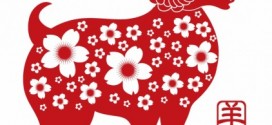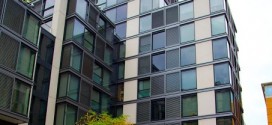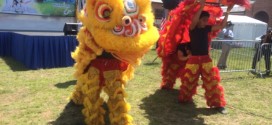By Amanda L. Andrei
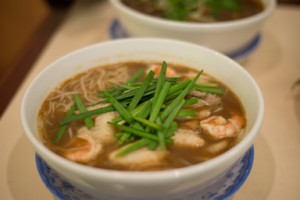
Ask any D.C. area resident for a recommendation on Vietnamese cuisine, and nine times out of ten you will be directed to Eden Center.
Nestled on the northern edge of that legendary traffic nightmare known as Seven Corners in Falls Church, Virginia, Eden Center is more than a Vietnamese shopping plaza. It’s the largest Vietnamese commercial center on the East Coast, and the center for Vietnamese American activity and business in the D.C. metropolitan region. Little children run through hallways, boxes of wooden shrines are stacked in corners and ornamental plants line the walls. Karaoke or foreign news broadcasts echo through the parking lot, their sounds reaching up to the Clock Tower, a replica of a downtown Saigon attraction. And the tantalizing smell of light lemongrass, charred beef, cinnamon soups, and fish stews wafts through the 120 stores filled with groceries, medicines, jewelry, music, and more.
So of course, it’s only natural to start here in the quest for a secret Vietnamese menu. But in Eden Center, what counts as a secret menu?
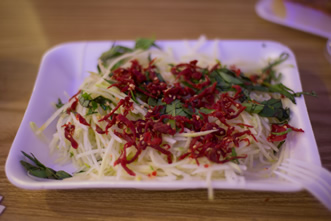
Normally, one would consider a secret menu the one that stays hidden from the general public. It may be the one that your Asian friend gets, in her (or her parents’) ethnic language, while you pour over your English-language menu and end up ordering the same thing again, because really, that curry with the unpronounceable name is just so good each time. That’s what this series on Hidden Menus is primarily about. But Eden Center, it turns out that the language barrier is the secret menu. After all, the menus are out in plain sight, but often in a language you can’t understand. So while the characters and letters are in visible, their meaning remains mysterious to many.
Several friends and I first made a stop at Huong Viet, one of the key restaurants of Eden Center. In business for over two decades, it is consistently named as one of Washington’s top spots for affordable and delicious Vietnamese food.
Dan, my friend and tour guide for all things Vietnamese, has been frequenting this restaurant with his parents since he was a child. According to Dan, Huong Viet used to have menu items listed only in Vietnamese. So that could have counted as a secret menu, except that the eatery’s increasing popularity has led to English translations for their astounding array of over 200 traditional Vietnamese dishes.
If you’re new to Vietnamese cuisine, Huong Viet provides a good first experience. The place is clean, lively, good for both families and first dates. The food is marvelously filling and quite kind to your wallet. Try the mi bò kho if it’s cold outside. It’s a thick beef broth with al dente egg noodles that tastes like Southeast Asian Christmas, replete with cinnamon and cloves.
If you’re slightly more daring and have a friend who can translate, wander through the large thatched gate entrance to Eden Center, and take a left toward Saigon West. This section of the Center houses a number of “carry out, carry in” shops. These are smaller, cafeteria-style places offering hot food buffets and a few tables. Some shops specialize in a few dishes, such as co’m tâ´m, steamed broken rice often accompanied with grilled meat and pickled vegetables, or bún bò hû´e, a hot beef broth with rice noodles (and sometimes cubes of congealed pork blood).
So if you wish to feel you’re experience authentic Vietnamese cuisine, the “hidden menu” goodies, here are three secrets to keep in mind at Eden Center:
Secret #1—It’s all in the name. Restaurants will often have a “generic” Vietnamese name, and then under that, a few phrases that mean that this is what their shop specializes in. The restaurant Thanh Tong, with the phrase ð?a?c biê?t bún bò huê´is letting you know, very roughly, that they are proud of their special beef broth. If you plan to be a Vietnamese epicure, know that “ð?a?c biê?t” means “special/feature dish.” After a while, you start to remember that thit means meat and bun and co’m means rice and huyê´t means (pork) blood, and you’re well on your way to cracking the codes of the secret menus.
Secret #2—Noodles vs. broth. It may seem weird to not order noodles, but go without them and you’ll get extra broth. At Thanh Vân, Dan and I ordered soups. Dan had the popular bún bò huê´ and I had the lesser known bún mam, a fish-based broth with chunks of fragrant fish, large pink shrimp, and cuts of fatty pork topped with scallions. Both soups were accompanied with a heaping plate of bean sprouts, cilantro, mint, and Thai basil. Since Dan and I were both cutting back on the carbs, we opted to leave the noodles in our dish. Later when we went to pay, we found that we could have had extra broth and eschewed the noodles. Next time, Thanh Tong, next time—especially since Dan informed me that bun mam can be hard to find, but once you find a restaurant that offers it, the restaurant usually does it very well.
Secret #3—The vegetarian bar at Song Que Deli. Song Que is located in the Sidewalk Shops and offers a variety of fresh desserts, bubble/jelly teas and drinks, spiced jerkies, and bánh mì (Vietnamese sandwiches). The bar has absolutely no labels on it, as items get switched out frequently. Most items are varieties of tofu and gluten, but if you’re not shy about asking the women behind the counter, you can find some surprising and tasty goods that they will wrap up for you to-go, or to eat in the small dining area in the back. Pointing at what I thought were spiced bamboo shoots, I found goi ba?´p chuô´i chay, banana heart salad, as well as a savory salad of julienned carrots, radish, and papaya. The menu items stay the same every weekday, with additional options on the weekend, but then change completely in following weeks.
With the popularity of items such as pho´ and bánh mì, Vietnamese cuisine is quickly rising as one of the tastiest Asian cuisines on the American culinary landscape. In addition, it is considered one of the healthiest cuisines in the world, thanks to its use of fresh vegetables and herbs, seafood, and broths. All this attention makes it all the more delightful to find these secret gems in Eden Center—a most delicious way to start the New Year.
 Asian Fortune Your source for all things Asian American
Asian Fortune Your source for all things Asian American

